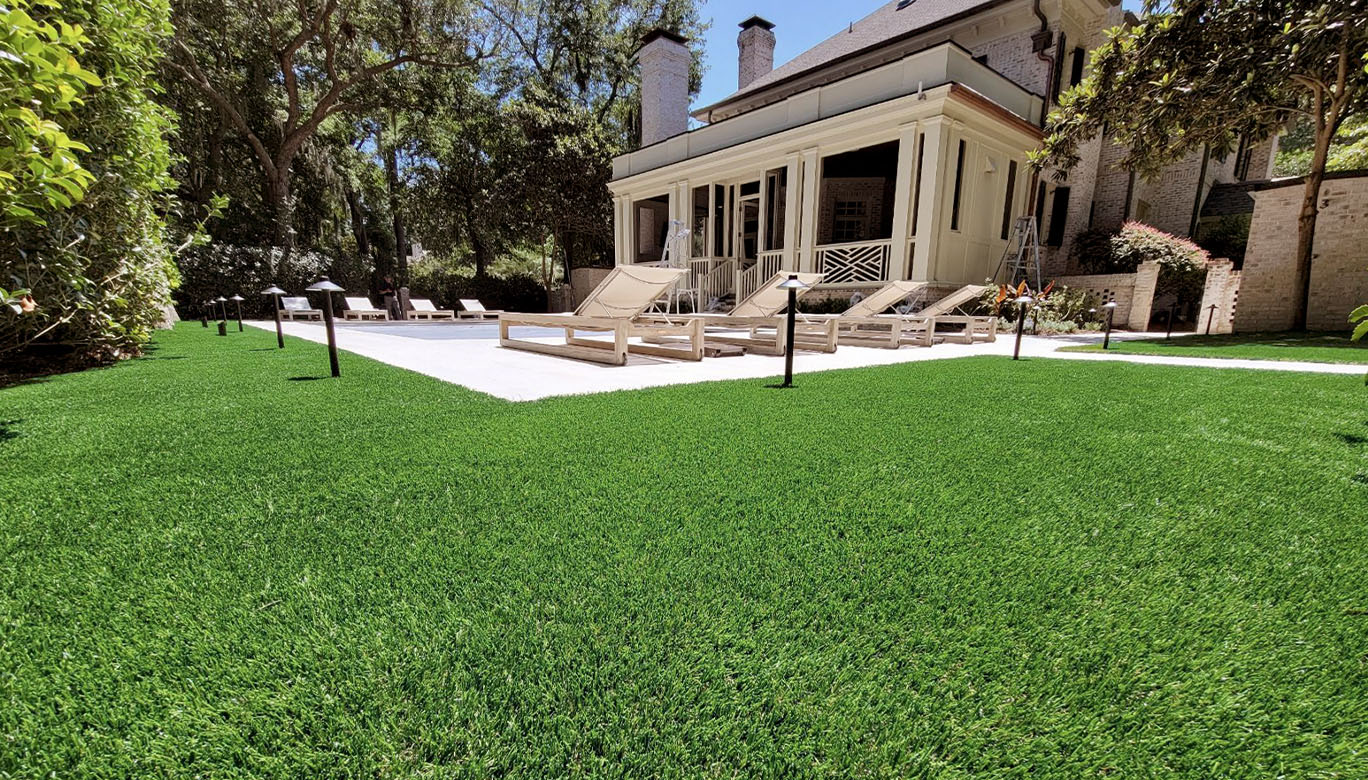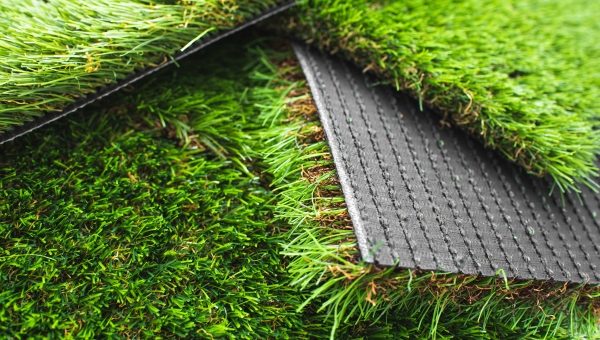Explore the Environmental Benefits of Opting for Artificial Lawn Solutions
The adoption of synthetic grass remedies offers a compelling opportunity to resolve pushing environmental obstacles. By substantially reducing water use and minimizing the application of harmful chemicals, these options not only promote sustainable landscape design yet likewise secure neighborhood ecological communities. The lower carbon impact connected with decreased upkeep tasks adds to a more lasting technique to land monitoring. Nevertheless, the ramifications of these advantages prolong beyond plain conservation efforts, questioning about their long-lasting effect on environment preservation and general ecological balance. Discovering these measurements reveals a complicated interaction worth considering.
Water Conservation Perks
Among one of the most significant advantages of synthetic grass is its ability to conserve water. Conventional grass lawns need considerable watering, especially in locations prone to dry spell or water limitations. In contrast, man-made grass does not require watering, substantially lowering the total need for water resources. This attribute is specifically beneficial in arid regions where water deficiency is a pushing worry.
By getting rid of the requirement for regular watering, synthetic grass adds to lasting landscape techniques and helps alleviate the ecological impact of extreme water intake. The conservation of water expands to the reduction of runoff, which can lead to soil disintegration and waterway contamination.
In addition, the installation of synthetic grass allows districts and property owners to designate water sources a lot more successfully, concentrating on important uses such as alcohol consumption water and farming. The change in the direction of fabricated grass not only promotes accountable water usage yet additionally straightens with more comprehensive ecological objectives focused on maintaining natural deposits.
As areas increasingly focus on sustainability, the water preservation benefits of synthetic grass present an engaging situation for its adoption in business and property landscaping jobs.
Decreased Chemical Usage
The change to synthetic grass considerably decreases the dependence on chemical treatments frequently utilized in natural yard maintenance. Conventional turf monitoring generally includes the application of herbicides, fertilizers, and chemicals to advertise growth and control pests. These chemicals can posture dangers to human health and wellness, regional wildlife, and the atmosphere, contributing to soil and water contamination.
In contrast, synthetic lawn gets rid of the need for these dangerous substances. As soon as installed, it requires marginal upkeep, largely including normal cleaning and occasional infill replenishment. This decrease in chemical use not just profits the instant setting however also adds to broader eco-friendly security. By decreasing the release of artificial compounds into the ecosystem, synthetic grass promotes healthier dirt and water systems.
Moreover, the lack of chemical overflow related to synthetic grass installments helps shield neighborhood waterways from pollution, supporting water life and preserving biodiversity. Arizona turf. As communities increasingly prioritize lasting practices, going with synthetic grass offers a viable option that lines up with ecological preservation goals. With this change, residential or commercial property owners can delight in lush green areas without jeopardizing ecological health, leading the way for an extra lasting future
Lower Carbon Impact

Furthermore, the installment of read this article synthetic grass can lead to considerable water conservation. Natural yards require substantial amounts of water for watering, which not just contributes to the carbon impact related to water removal and treatment but likewise strains neighborhood water sources. In contrast, synthetic grass requires marginal upkeep, requiring no watering, consequently significantly minimizing water use and its associated power expenses.
In addition, the long life of synthetic lawn adds to its decreased carbon impact. With a life-span of as much as 15 years or even more, the requirement for constant substitutes is lessened, causing much less waste and reduced power usage in production and getting rid of typical yard choices. On the whole, artificial turf presents a sustainable option for eco conscious landscape design.
Environment Conservation
Environment preservation is an important factor to consider in the discussion over landscape design options, especially when comparing synthetic grass to natural turf. Natural turf lawns typically need substantial maintenance, including using pesticides, fertilizers, and herbicides, which can adversely influence neighborhood ecological communities. These chemicals can leach into the dirt and rivers, harming indigenous plants and fauna and disrupting neighborhood habitats.
In contrast, man-made grass presents a possibility to minimize the ecological footprint of landscaping. By going with artificial turf, house owners can lessen the disruption of all-natural environments connected with typical grass care methods. Synthetic grass gets rid of the requirement for unsafe chemicals, thus protecting neighboring wild animals and keeping the honesty of surrounding ecological communities. Furthermore, the installment of synthetic grass can result in the conversion of previous yard locations into even more biodiverse landscapes, such as pollinator yards or indigenous plant locations, which can support regional wild animals.
Ultimately, the shift to artificial turf not only conserves water and reduces upkeep initiatives but also cultivates a more unified relationship in between human tasks and the all-natural setting, advertising environment conservation while doing click for more so.
Long-Term Sustainability
Long-term sustainability is a critical consider examining the benefits of synthetic grass over traditional lawn yards. Among one of the most considerable advantages of artificial turf is its sites toughness; it can last approximately 15-20 years with minimal upkeep, whereas natural lawn calls for frequent reseeding and replacement. This durability lowers the demand for constant resources, such as water, fertilizers, and pesticides, which are vital for keeping a healthy and balanced turf yard.
Furthermore, synthetic grass adds to a decrease in carbon emissions linked with lawn treatment equipment. Standard lawns commonly require gas-powered lawn mowers, leaners, and blowers, all of which add to air pollution. Arizona turf. On the other hand, synthetic grass eliminates the demand for such equipment, promoting a cleaner setting
In addition, the production of synthetic grass significantly uses recycled materials, boosting its sustainability profile. As producers adopt environment-friendly methods, the environmental footprint of man-made grass proceeds to decrease.

Conclusion
The fostering of synthetic grass solutions offers considerable environmental benefits, consisting of significant water preservation, minimized dependence on harmful chemicals, and a lower carbon footprint. Synthetic turf aids in preserving natural habitats by reducing land disturbance and advertising long-lasting sustainability with the usage of sturdy materials. Collectively, these aspects highlight the capacity of synthetic grass to add positively to environmental health and wellness and supply a practical choice to traditional landscaping methods in an increasingly resource-conscious world.
In contrast, artificial grass does not need watering, substantially lowering the overall demand for water resources. By reducing the launch of artificial compounds into the environment, fabricated turf promotes much healthier soil and water systems.
Furthermore, the installation of artificial grass can result in significant water conservation. In comparison, artificial turf requires very little maintenance, needing no watering, therefore considerably decreasing water use and its connected energy prices.

Comments on “Premium Arizona Turf Solutions for a Stunning and Green Landscape”